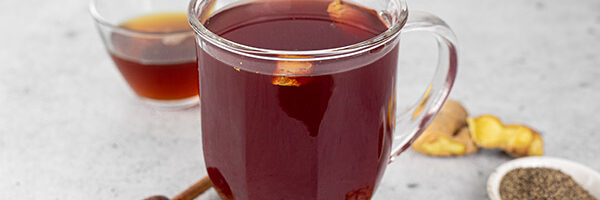
Tendon Disorders: Risk Factors and Innovative Treatment Options
Tendon disorders are very common among patients with various nutrient deficiencies and account for 20-30% of consultations in rheumatology and orthopedic practices.
Tendons are strong fibrous structures that connect muscles to bones and have the main function of transforming the force generated by a muscle contraction into movement.
In addition to this, they can absorb external forces to limit muscle overloads and act as temporary energy storage devices.
The term “tendinitis” or “tendinopathy” describes a clinical condition characterized by pain, swelling, and functional limitation of the tendon.
Risk Factors for Tendinitis
Repetitive Use
Repetitive forceful physical activity is one of the most common contributors to various forms of tendinitis. For instance, dancers show a higher prevalence of achilles tendinitis, while rotator cuff tendinitis is common in tennis and baseball.
Prescription Medication
Different drugs can negatively affect tendon tissue metabolism and represent a risk factor for developing tendon diseases. Among them, statins, quinolone antibiotics, aromatase inhibitors, and corticosteroids are the drugs most frequently associated with alteration of tendon integrity.
- Statins
Cholesterol-lowering drugs, block the formation of coenzyme Q10 (CoQ10), essential for synthesizing ATP.
By interfering with CoQ10 and ATP production, statin drugs may not only cause muscle pain, which is well-known, but also can cause ruptures of the biceps and Achilles tendons, and tendinitis in the wrist and trigger finger.
- Fluoroquinolones
These are drugs prescribed for acute illnesses such as bronchitis and sinus and urinary tract infections. These drugs can cause tendon problems because they interfere with collagen-regulating components that maintain tendon integrity.
- Aromatase Inhibitors
Drugs in this group are used for treating hormone-positive breast cancer. There’s an association between using an aromatase inhibitor and developing trigger finger. Other side effects are joint stiffness and pain as well as bone loss and fractures.
- Corticosteroids
While prednisone and other drugs in this group can be absolutely lifesaving for people, they can make your soft tissues very thin and weak and potentially rupture tendons.
- Glycation Products
In those affected by diabetes, glycation products deteriorate the biological and mechanical functions of tendons and ligaments.
Tendon Pathologies as a Precursor to Metabolic Disease
Tendon pathologies can represent the first clinical presentation of various metabolic diseases. In chronic gouty arthritis and hypercholesterolemia (high cholesterol), monosodium urate crystal and cholesterol deposits in the tendons can determine low-grade inflammation, which is responsible for tendon degeneration.
Moreover, some studies have shown a relationship between thyroid dysfunction and tendon disorders such as rotator cuff tears and spontaneous rupture of the long head of the biceps tendon.
Treatment Options
Traditional treatment options targeting tendinitis can be grouped in pharmacological therapies and physical therapies.
Pharmacological
Pharmacological treatment of tendinitis/tendinopathies is difficult. Because tendons have a reduced blood supply, drug penetration into the target tissue is low. No specific tendon-targeting drugs have been developed. Therefore, pharmacological therapy is mainly focused on pain control.
Physical Therapy and Exercise
Physical therapy is one of the most efficient approaches to treat various forms of tendinitis. The initial goal of physical therapy is to reduce tendon inflammation and pain. Once the pain and inflammation are well controlled, therapist-guided exercises should be introduced into a daily routine.
Modalities to reduce inflammation and pain can include:
- Therapeutic ultrasound- provides deep heating to soft tissues in the body. This is different than diagnostic ultrasound that is used to see the inside of the body.
- Iontophoresis with magnesium salts and/or hydrocortisone- Iontophoresis is a type of electrical stimulationusing a negatively or positively charged current applied to skin which can help relieve soft-tissue injuries and joint swelling.
- Class IV laser – targets damaged tissue with specific wavelengths of light that interact with tissue and accelerate the healing process.
- Pulse electromagnetic field therapy (PEMF) – directs small amounts of energy toward a specific part of your body via a specialized magnetic helping to reduce inflammation.
- Shock-wave therapy – a transcutaneous application of high-energy acoustic waves to break down tissue or to promote healing and repair.
- Diathermy – uses high-frequency electric current to produce heat deep inside a targeted tissue. It can reach areas as deep as two inches beneath the skin’s surface.
In addition to pharmacological and physical therapy, food supplements play an important role in prevention and therapy of tendinitis.
These supplements can be divided into anti-inflammatory and anabolic supplements.
Anti-inflammatory supplements include:
- Boswellia
- Bromelain
- Cat’s claw
- CBD (oral and topical)
- Curcumin
- MSM
- Omega-3 fatty acids
Anabolic supplements that promote metabolic activity include:
- Biotin
- Biosil
- Branched Chain Amino Acids (BCAA)
- Collagen
- Eclipta Alba
- Hyaluronic acid
- N-Acetyl Glucosamine (NAG)
- Vitamin C
- Vitamin D
Dietary and Alcohol Considerations
There are a limited number of studies connecting diet and alcohol to tendinopathies, however; there is slight evidence that alcohol may deter tendon healing by inhibiting collagen synthesis. And as our tendons are mainly composed of type I collagen, this becomes a problem because alcohol slows the continuous regrowth of collagen.
Regenerative Therapies
In addition to the above-mentioned therapies, several innovative regenerative therapies targeting tendinitis may be beneficial.
These include but are not limited to:
- Prolotherapy – an injection treatment that stimulates the healing of loosened ligaments and tendons.
- Prolozone therapy – oxygen injection techniques to trigger the regeneration of damaged tissues in the joints, ligaments, and tendons.
- PRP (Platelet-Rich Plasma) therapy – a concentration of platelet cells taken from your blood and injected into the problem area. Platelets have growth factors that may help in the healing process of chronic injuries.
- Exosome therapy – Also known as extracellular vesicles (particles that release naturally from a cell that cannot replicate), they are responsible for cell-to-cell communication. They facilitate the exchange of biological information between different cell types. They travel to the target area and are then taken up by the target’s cells to facilitate healing.
Tendinopathies are debilitating injuries that can negatively affect your quality of life. Fortunately, there are various well established treatment options that can manage pain and increase functionality. While research is ongoing in the field of regenerative therapies, there are many promising choices proven to be beneficial. It is important to note that achieving relief will likely not come from just one treatment option, but rather a combination of methods.
REFERENCES:
Journal of the International Society of Sports Nutrition, Vol. 19 (1):474-504, (Aug 2022)
“The impact of nutrition on tendon health and tendinopathy: a systematic review” Hijlkema, Aveline, Roozenboom, Caroline. https://doi.org/10.1080/15502783.2022.2104130
Medicina (Kaunas), 7;55(8): 447. (Review August 2019) “Tendinopathy: Pathophysiology, Therapeutic Options, and Role of Nutraceutics. A Narrative Literature Review” C Loiacono, S Palermi, B Massa,
Nutrients, 14(13): 2663 (July 2022) “Effect of Vitamin C on Tendinopathy Recovery: A Scoping Review” Noriega‐gonzález, D.C., Drobnic, F., Caballero‐garcía, A.
Journal of the International Society of Sports Nutrition, 19(1):474-504 (August 2022) “The impact of nutrition on tendon health and tendinopathy: a systematic review” Hijlkema A, Roozenboom C, Mensink M.
Front Pharmacol. 13:990241: (Sep 2022) “Fluoroquinolone-associated suspected tendonitis and tendon rupture: A pharmacovigilance analysis from 2016 to 2021 based on the FAERS database” Shu Y, Zhang Q, He X.
Nutrients, 11(1):76: (Jan 2019) “Oral Supplementation of Specific Collagen Peptides Combined with Calf-Strengthening Exercises Enhances Function and Reduces Pain in Achilles Tendinopathy Patients” Praet, Stephan F E, Purdam, Craig R, Welvaert, Marijke.
Funct. Biomater.14, 299 (June 2023)“Therapeutic Potential of Exosomes in Tendon and Tendon–Bone Healing: A Systematic Review of Preclinical Studies” Zou, M.; Wang, J.; Shao, Z.



